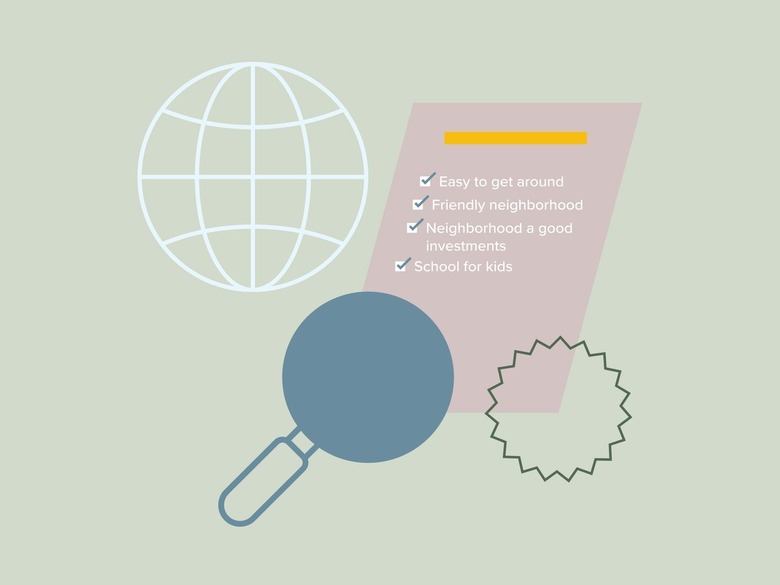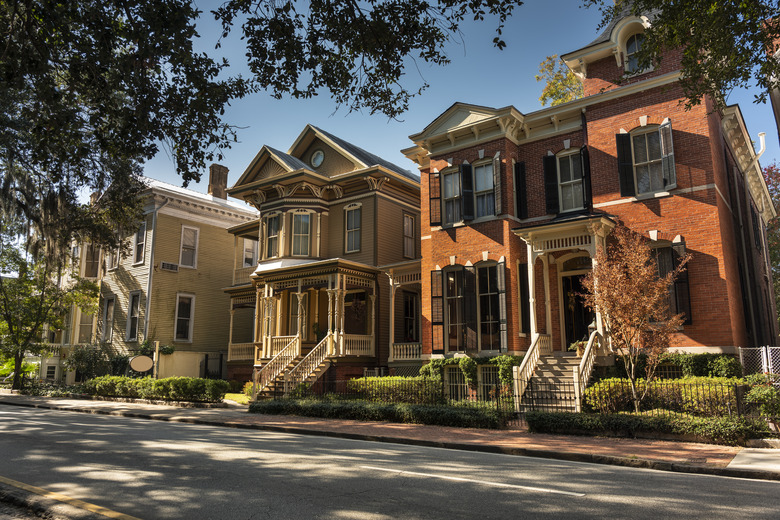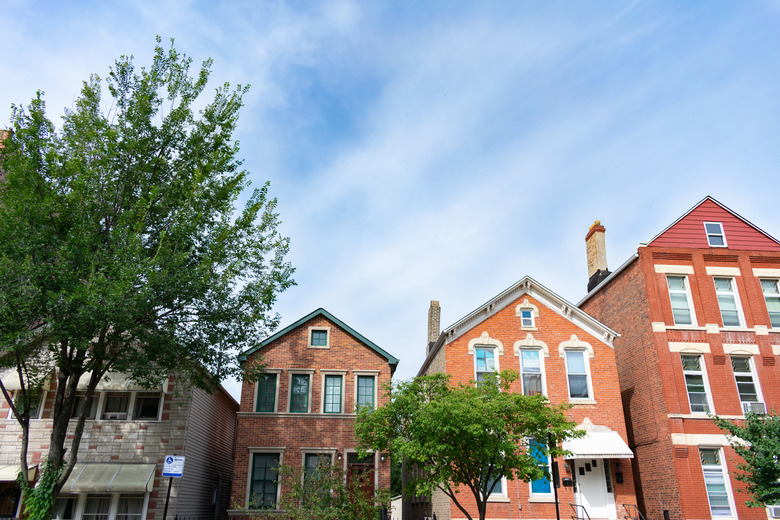How To Research A Neighborhood Before You Buy
When you sign the closing papers to complete your new home purchase, you're not just getting a new house — you're buying into a new neighborhood. As a homebuyer, you have far less control over it than you do over your own property, so it behooves you to research it a little before you decide to move there. The house may be everything for which you had hoped, but if you don't fit into the neighborhood, you could get a serious case of buyer's remorse.
The internet is chock full of tools to help you get a detailed impression of a neighborhood, but it's no substitute for actually going there and checking things out for yourself. After all, living in a new neighborhood isn't a virtual experience; it's a physical, emotional and even spiritual one. If you subscribe to the golden rule of striving to love your neighbor as yourself, it's good to know in advance that it might be a struggle to live up to your ideals in this particular neighborhood because of loud neighbors, all-night parties, crime, or vandalism.
Is It Easy to Get Around?
Is It Easy to Get Around?
You can use internet tools to help you determine whether you'll be able to get where you need to go by walking or whether you'll have to drive everywhere. One resource is Walk Score, a website that assigns a number based on street design, availability of public transport and distance to schools, parks and essential services. The higher the walk score, the higher the walkability and the less you'll have to use your car. That's important if you like to get exercise and you want to minimize your reliance on fossil fuels.
Google Earth is also a useful tool that you can use to zero in on a neighborhood to get a bird's-eye view as well as a street-level view. It can give you information about topography, such as steep hills or waterways that may hinder walkability. You'll also get an idea of the general road design, and you'll be able to see roads that are impassable because they dead end on a busy highway or a railroad track and force bikers and pedestrians onto larger, busier and less congenial thoroughfares. Check Google Maps at rush hour for the red lines that mean slow traffic and wait times that could potentially give you daily headaches.
Such tools are useful, but they aren't a substitute for personal experience, which you should get by walking around the neighborhood yourself, perhaps several times at different times of the day. That will give you an idea of the general rhythm of the neighborhood — when people are out and when everything is quiet — as well as the cleanliness and the general ambiance. If you're going to be driving to work, take a test drive to get an idea of the commute you're going to have to deal with every day.
Is It a Friendly Neighborhood?
Is It a Friendly Neighborhood?
A house becomes a home when it's in a friendly neighborhood, and the best way to find out if people are friendly is to talk to them. Strike up conversations while walking the neighborhood and chat with local shopkeepers. If you're about to move next door to quirky neighbors with a reputation, that's the best way to find out about them in advance so you can prepare. You'll also be introducing yourself, which makes it easier for people to welcome you into the community.
If you're moving to a new neighborhood from far away, the internet has neighborhood apps to help with social research. One of the most useful is Nextdoor. Joining a neighborhood group on Nextdoor is free and is a great way to get into the local conversation from afar. If you have questions about your new neighborhood, who better to ask than your new neighbors? The neighborhood may also have a Facebook or email group, and you can probably find out how to join at Nextdoor or by striking up a conversation on the street.
Is the New Neighborhood Safe?
Is the New Neighborhood Safe?
No neighborhood is completely crime-free, but some are more so than others, and that's definitely a concern, especially if you have kids. The most reliable source of crime data is the local police department or sheriff's office, so it doesn't hurt to pay a visit and speak with the receptionist or officer on duty. If police stations make you nervous, websites like MyLocalCrime.com keep a running track of local incidents and allow you to input your address and see a readout. Do this several times at different times of the day to get a feel for police activity in your new neighborhood. Another useful tool is AreaVibes, which assigns a livability score to most urban areas in the United States and Canada, including a consideration of crime statistics.
Is This Neighborhood a Good Investment?
Is This Neighborhood a Good Investment?
Over and above the lifestyle considerations, there are plenty of financial issues involved with buying a house and moving into a new neighborhood. Are property values in your new neighborhood going up or down, or are they remaining stable? Property taxes in some areas can raise homeowners' monthly payments by 25 percent or more. Your real estate agent is probably your best source of information about financial matters like market trends, home values and taxes, but if you aren't yet working with a real estate agent, you can find information online.
Zillow and Realtor.com are two websites that provide tax data searchable by property address. Zillow also provides a downloadable market analysis that shows past trends so you can extrapolate to get an idea of what your home will be worth in 10 years. Of course, no website or real estate agent has a crystal ball that can predict the future with certainty, but you can reduce risk by doing your homework.
What About Schools for the Kids?
What About Schools for the Kids?
The best place to get information about the school district in your new neighborhood is the department of education for the state or provincial government. You can access its website, but a personal connection by telephone will probably give you more information relevant to your particular situation. That's also a good place to find the locations of the local schools in the new neighborhood so you can figure out how easy or difficult it will be for the kids to get to school.
You can also get information about schools in selected communities by visiting GreatSchools.org or SchoolDigger.com, which are great resources if you're looking for a particular type of school. SchoolDigger provides an interactive map that lets you zoom in on your neighborhood and get an overview of the schools within a reasonable distance. The map displays the school's name and provides a ranking. It doesn't get much easier than that, but of course, you should always follow up with real-world inquiries to get a more complete picture.


